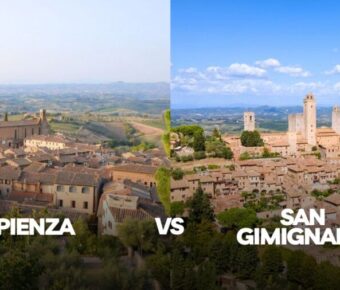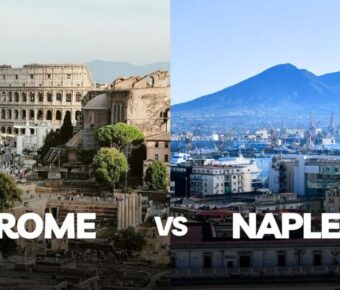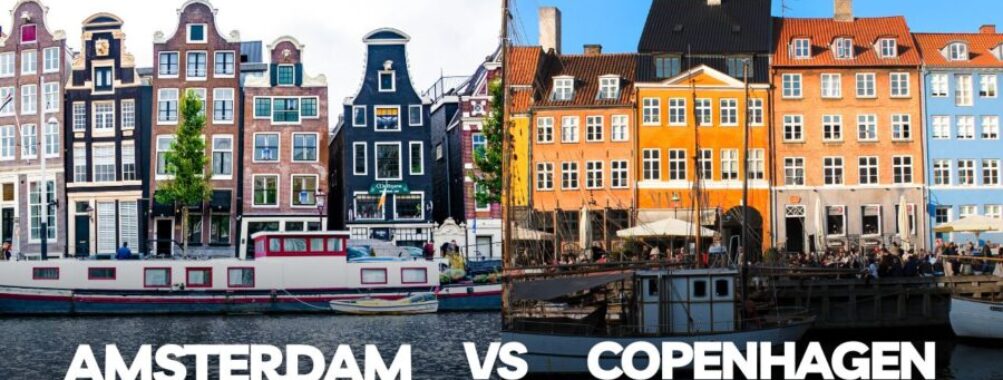
Amsterdam vs Copenhagen: Which Northern European City Offers Better Value in 2025
Amsterdam and Copenhagen rank among Europe’s most charming canal cities, each offering a unique blend of history, culture, and modern living. Both capitals share fascinating similarities—from bike-friendly streets to a laid-back atmosphere. Yet each city maintains its own distinct character that sets it apart from the other.
Amsterdam’s population is 850,000 compared to Copenhagen’s 600,000, so travelers will find that Amsterdam offers more bustling energy while Copenhagen provides a calmer, more intimate experience. The Dutch capital draws visitors with its world-famous museums and nightlife, while the Danish capital entices with its innovative food scene and cutting-edge design.
Choosing between these Northern European gems comes down to personal taste. Amsterdam’s rich art history and cozy brown cafes contrast with Copenhagen’s sleek Scandinavian style and green initiatives. Each city promises unforgettable memories – it’s just a matter of which flavor of urban charm speaks to you more.
Contents
- Geographical and Cultural Overview
- Location and Climate
- Historical Significance
- Cultural Ethos
- Iconic Attractions and Museums
- Amsterdam’s Museums
- Copenhagen’s Historic Sites
- Recreational Activities
- Outdoor Adventures
- Leisure in the Parks
- Culinary Exploration
- Dutch Gastronomy
- Danish Culinary Scene
- Transportation Systems
- Public Transit Options
- Cycling Infrastructure
- Nightlife and Entertainment
- Amsterdam’s Nightlife
- Copenhagen’s Social Scene
- Shopping and Design
- Unique Boutiques
- Craft and Design Markets
- Lodging and Accommodations
- Hotels and Hostels
- Alternative Stays
- Comparative Insights
- Cost of Living
- Quality of Life
- Similarities and Differences
- Frequently Asked Questions
- What are the unique advantages of choosing Amsterdam as a study abroad destination compared to Copenhagen?
- How does the cost of living in Copenhagen measure up against Amsterdam for expatriates?
- Can you detail the distinct experiences of raising a family in Amsterdam versus Copenhagen?
- What cultural differences should one expect when moving from Amsterdam to Copenhagen?
- What are the key comparisons between the public transportation systems in Amsterdam and Copenhagen?
- How do the climates of Amsterdam and Copenhagen differ, particularly during winter months?
- More Travel Guides
Geographical and Cultural Overview
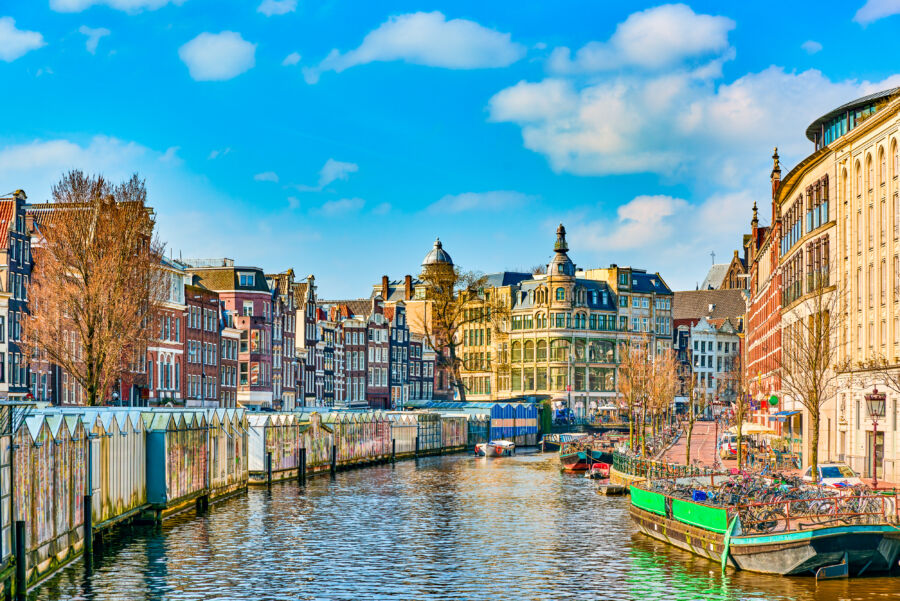
Amsterdam and Copenhagen stand as two distinct European capitals, each shaped by maritime influences and centuries of unique development. Both cities embrace cycling culture and sustainable living while maintaining their own distinctive characters.
Location and Climate

Amsterdam is a city in the western Netherlands, built on an intricate network of canals dating back to the Dutch Golden Age. The city enjoys a moderate maritime climate with mild winters and cool summers. Rain falls throughout the year, and temperatures rarely drop below freezing.
Copenhagen rests on Zealand, Denmark’s largest island. The city stretches along the Øresund Strait, connecting to Sweden.
The Danish capital experiences slightly colder winters than Amsterdam, with more frequent snowfall. Due to its northern latitude, summer days stretch longer.
Historical Significance

Amsterdam rose to prominence during the 17th century as a major trading hub. The city’s famous canal ring became a UNESCO World Heritage site, reflecting its maritime trading past. Its narrow houses and merchant mansions tell stories of wealth and commerce.
By the 15th century, Copenhagen had evolved from a Viking fishing village to Denmark’s power center. The city served as a vital Baltic Sea port, controlling access between the North and Baltic Seas. Medieval architecture mixed with royal palaces throughout the historic center.
Cultural Ethos

Amsterdam embraces personal freedom and creativity. The city’s laid-back attitude shows in its café culture and artistic heritage.
Bikes rule the streets, with dedicated lanes crisscrossing the city. Local markets and street festivals bring communities together.
Copenhagen champions hygge – the Danish concept of coziness and well-being. Design influences everything from furniture to street planning.
The city takes pride in its environmental focus and social equality. Cycling paths connect neighborhoods, while harbor baths showcase the clean urban environment.
Both cities lead in sustainable urban planning. Their compact designs make walking and cycling natural choices for getting around. Green spaces dot both urban landscapes, from Amsterdam’s Vondelpark to Copenhagen’s Tivoli Gardens.
Iconic Attractions and Museums

Both cities showcase extraordinary cultural heritage through world-class museums and historic landmarks. Amsterdam’s museums house masterpieces from Dutch Golden Age painters, while Copenhagen’s attractions blend royal history with modern Danish design.
Amsterdam’s Museums
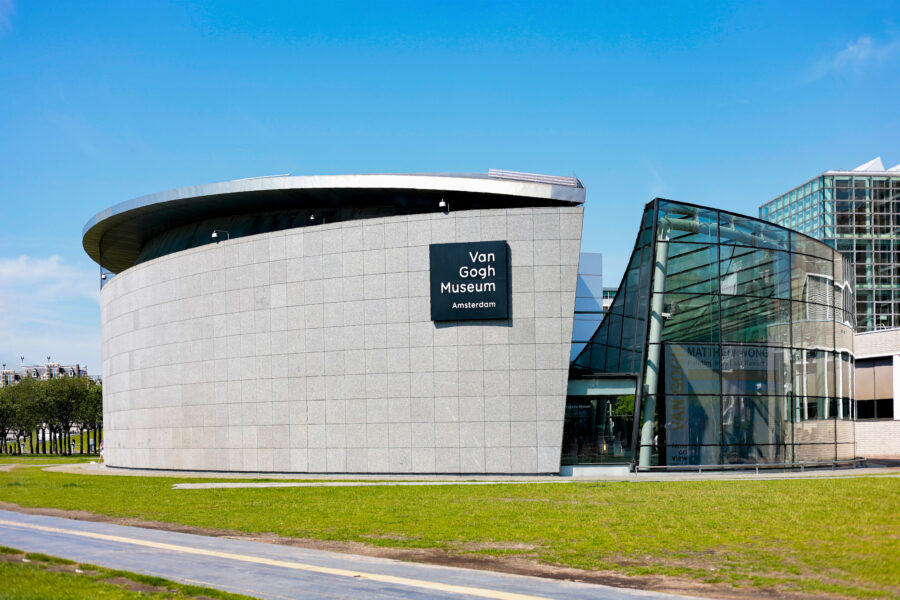
The Rijksmuseum stands as the crown jewel of Dutch art, displaying Rembrandt’s “Night Watch” and Vermeer’s “The Milkmaid” in its stunning galleries. You’ll need at least 3-4 hours to explore the highlights of this massive collection.
The Van Gogh Museum holds the world’s largest collection of Vincent van Gogh’s work. His famous “Sunflowers” and “Self-Portraits” draw art lovers from across the globe. The museum offers excellent audio guides in multiple languages.
The NEMO Science Museum’s ship-shaped building is hard to miss. Kids love the interactive exhibits spread across five floors of hands-on science experiments.
The Anne Frank House provides a moving glimpse into WWII history. Book tickets online at least two months ahead of time, as the wait times can be extremely long.
Copenhagen’s Historic Sites
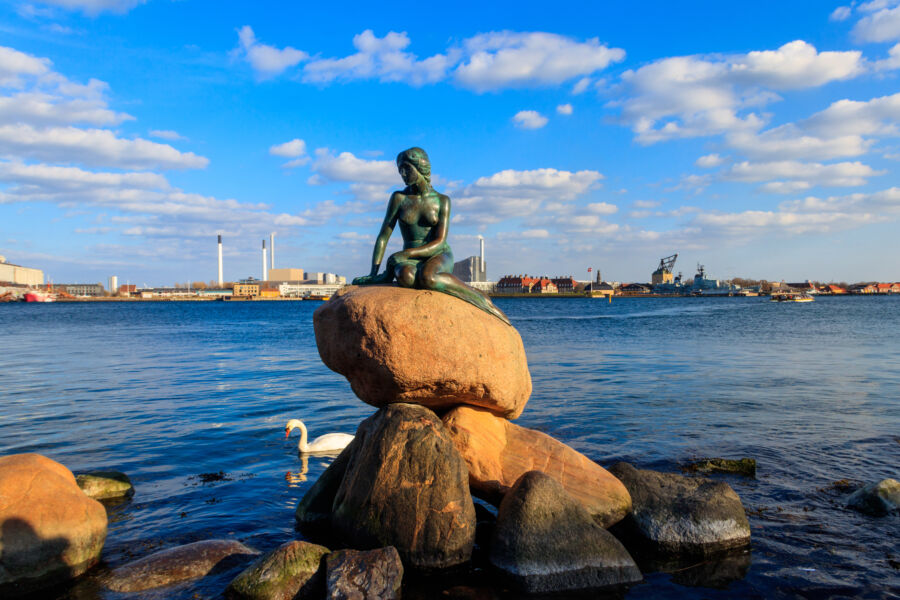
Tivoli Gardens mixes old-world charm with modern fun. This magical amusement park from 1843 inspired Walt Disney himself. At night, the gardens sparkle with thousands of lights.
The Little Mermaid statue sits quietly by the harbor. While smaller than many expect, it’s worth visiting early morning to avoid crowds and get the best photos.
Nyhavn’s colorful 17th-century houses make it Copenhagen’s most photographed spot. The canal-side restaurants serve fresh seafood, though prices run high in this tourist hotspot.
Rosenborg Castle houses the Danish Crown Jewels. The Renaissance architecture and royal collections offer fascinating insights into the Danish monarchy. The castle’s gardens provide a peaceful escape from city bustle.
Recreational Activities
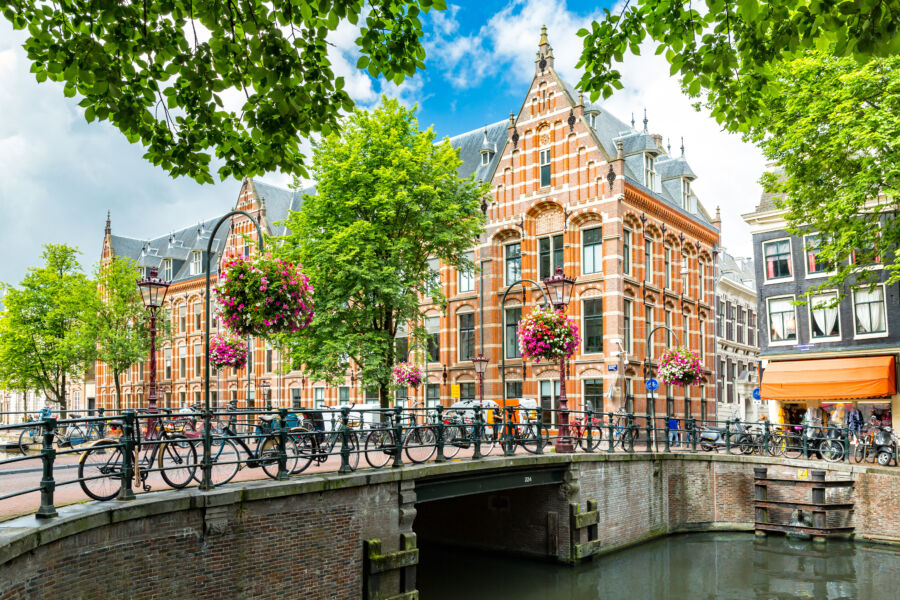
Both Amsterdam and Copenhagen offer unique ways to enjoy outdoor recreation and leisure time, with extensive bike paths, beautiful parks, and vibrant outdoor spaces perfect for relaxation.
Outdoor Adventures

Cycling is the top activity in both cities. Amsterdam’s bike paths wind through historic streets and along scenic canals. The Amsterdamse Bos forest park offers 50 kilometers of cycling trails through woods and meadows.
Want to get on the water? Book a canal cruise to see the cities from a different angle. The canals provide perfect spots for kayaking and paddleboarding in the summer months.
Copenhagen’s harbor baths let visitors swim right in the city center. The clean water and floating platforms create a unique urban beach experience.
Leisure in the Parks
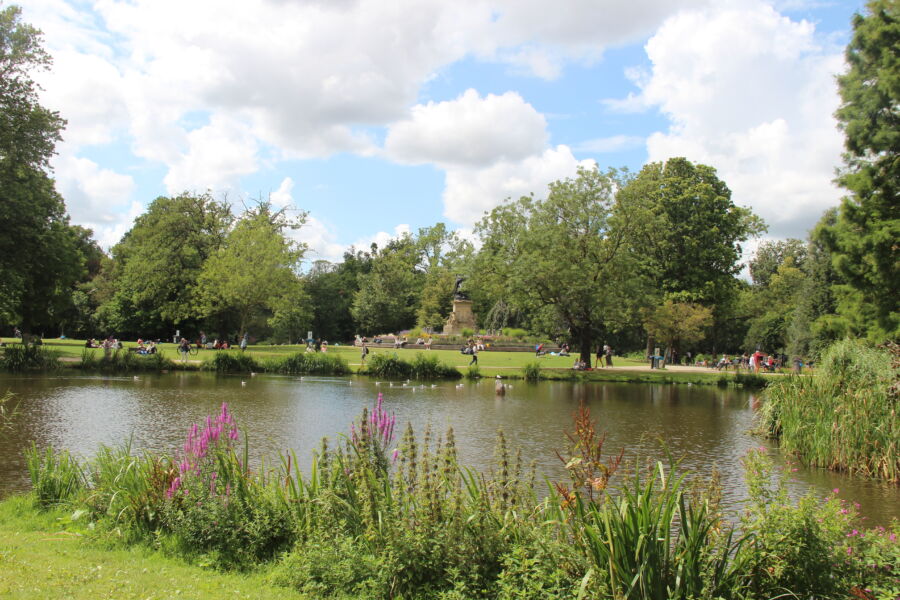
Vondelpark is Amsterdam’s green heart, perfect for picnics and people-watching. Street performers entertain visitors, while locals jog or walk their dogs along tree-lined paths.
Copenhagen’s famous Tivoli Gardens combines nature with fun, featuring flower gardens next to amusement rides. The city’s other parks host free outdoor concerts and movies in summer.
Both cities offer outdoor activities and tours year-round. In winter, ice skating takes over the parks, while in summer, food festivals and outdoor markets are held.
The cities maintain excellent picnic spots and children’s playgrounds throughout their green spaces. Each park has its own character, from peaceful rose gardens to lively skateparks.
See Related: Copenhagen vs Stockholm: Best Nordic Capital for Your Next Adventure
Culinary Exploration

Both cities offer distinct food experiences that reflect their unique cultures and traditions. Amsterdam features cozy cafes and comfort foods, while Copenhagen stands out with its innovative fine dining scene.
Dutch Gastronomy

Amsterdam’s food scene combines traditional Dutch comfort food with international influences. Cozy brown cafes serve hearty local favorites like stamppot (mashed potatoes with vegetables) and bitterballen (crispy beef croquettes).
Street food is a big part of Amsterdam’s culture. Herring stands serve raw fish with onions and pickles, and famous Dutch fries topped with mayo or satay sauce.
Thanks to its historic connections, the city has many Indonesian restaurants. Rice tables (rijsttafel) let you try many small dishes in one meal.
Traditional Dutch breakfast spots serve fresh bread, cheese, and sweet treats like stroopwafel – thin waffle cookies filled with caramel syrup.
Danish Culinary Scene

Copenhagen’s restaurant scene ranks among the world’s best. The city has earned many Michelin stars and pioneered New Nordic Cuisine, which focuses on local, seasonal ingredients.
Food markets like Torvehallerne showcase Danish specialties. Try smørrebrød (open-faced sandwiches) topped with fish, meat, or cheese on dark rye bread.
Danish pastries are a must-try breakfast item. Local bakeries make fresh kanelsnegl (cinnamon rolls) and wienerbrød (flaky pastries) daily.
The city’s coffee culture is strong. Small cafes serve high-quality coffee paired with freshly baked treats, and many spots roast their own beans.
Street food markets like Reffen bring together food trucks and stalls serving both Danish and international dishes at good prices.
Transportation Systems
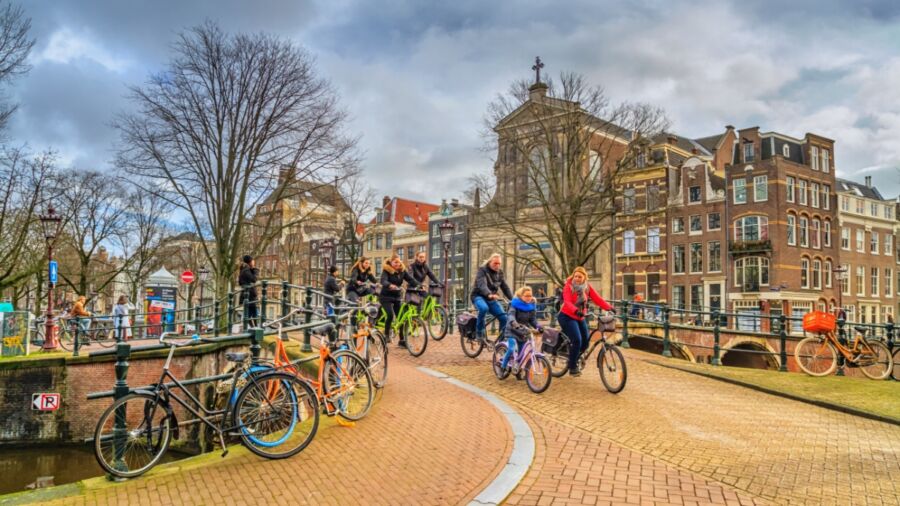
Both Amsterdam and Copenhagen excel in sustainable urban mobility with efficient public transit networks and world-class cycling infrastructure. Each city makes getting around simple and eco-friendly for tourists and locals alike.
Public Transit Options

Copenhagen’s metro, buses, and trains run on a zone-based fare system. Visitors can buy the Copenhagen Card for unlimited rides plus free entry to many attractions. The metro operates 24/7, making late-night travel easy and safe.
Amsterdam’s transport network includes trams, buses, and metros. The GVB public transit company operates most services. Trains from Schiphol Airport reach the city center in just 20 minutes, making air travel connections smooth.
Both cities offer tourist-friendly ticket options. Single tickets, day passes, and multi-day cards are available at stations and convenience stores.
Cycling Infrastructure

Copenhagen’s bike lanes stretch over 350 kilometers and have dedicated traffic signals for cyclists. The city has designed wide, protected paths separated from car traffic. Bike parking stands are abundant near shops, stations, and attractions.
Amsterdam matches Copenhagen’s cycling excellence with extensive bike paths and rental options. The flat terrain makes biking easy for beginners. Most streets have dedicated cycling lanes, and drivers are very mindful of bikes.
Both cities offer bike share programs and rental shops. Safety features like bright lighting and clear signage make cycling comfortable even for tourists new to urban biking.
Nightlife and Entertainment
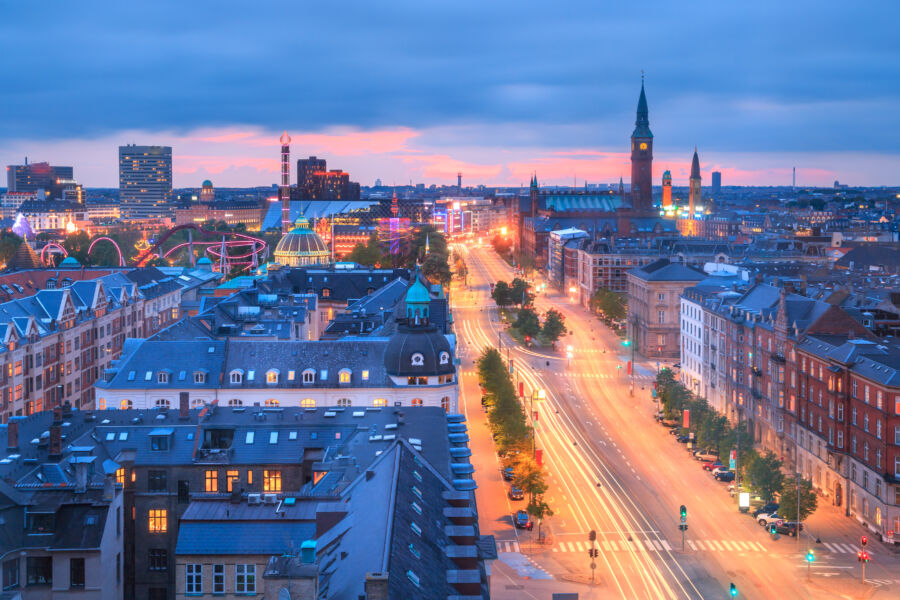
Both cities offer distinct after-dark experiences, with Amsterdam’s wild party scene and Copenhagen’s laid-back social vibe creating unique atmospheres for night owls.
Amsterdam’s Nightlife

Amsterdam’s nightlife starts late and ends early in the morning. The city buzzes with energy in areas like Leidseplein and Rembrandtplein, where clubs pump music until sunrise.
The Red Light District transforms at night into a tourist hotspot. While famous for its red-lit windows, the area also houses some of the city’s most popular bars and clubs.
Club venues like Paradiso and Melkweg host live music acts in converted historic buildings. These spots mix Amsterdam’s rich history with modern entertainment.
Local brown cafes (traditional Dutch pubs) offer a more relaxed option. These cozy spots serve Dutch beers and traditional snacks in a warm atmosphere.
Copenhagen’s Social Scene

Copenhagen’s nightlife centers around trendy neighborhoods like Vesterbro and Nørrebro. The vibe here is more relaxed than Amsterdam, with an emphasis on quality drinks and good conversation.
The city’s craft beer scene shines at night. Microbreweries and beer bars serve local Danish brews alongside international favorites.
Meatpacking District (Kødbyen) stands out as a hip nightlife hub. Former meat processing buildings now house some of the city’s best cocktail bars and dance clubs.
Students flock to Nørrebro for affordable drinks and casual vibes. This neighborhood offers a mix of dive bars, wine bars, and small dance clubs that stay open until 3 AM.
Shopping and Design

Both cities excel in retail therapy with distinct shopping cultures that blend modern trends and traditional craftsmanship. Amsterdam mixes quirky boutiques with floating markets, while Copenhagen shines with sleek Danish design and high-end fashion.
Unique Boutiques

The Strøget in Copenhagen stretches as Europe’s longest pedestrian shopping street. It’s packed with Danish design shops and fashion boutiques like Illums Bolighus and Hay House. The street mixes big international brands with local designers.
Amsterdam’s Nine Streets district is known for its vintage finds and one-of-a-kind pieces. Small shops line the canals, selling everything from handmade jewelry to rare vinyl records. The P.C. Hooftstraat offers luxury shopping with brands like Gucci and Louis Vuitton.
Craft and Design Markets

Amsterdam’s Floating Flower Market, which is held on canal boats, sells fresh tulips and unique Dutch gifts. The city’s Albert Cuyp Market features local artisans selling handmade goods and traditional Dutch crafts.
Copenhagen’s Torvehallerne houses Danish design stalls and food vendors under glass roofs. Local craftspeople display ceramics, textiles, and furniture pieces that showcase clean Scandinavian style.
Both cities host seasonal markets where designers and artists sell their work. The Copenhagen Design Week brings furniture makers and textile artists together, while Amsterdam’s Pure Market spotlights independent creators and vintage collectors.
See Related: Amsterdam vs Rotterdam: Key Differences to Shape Your Dutch Adventure
Lodging and Accommodations
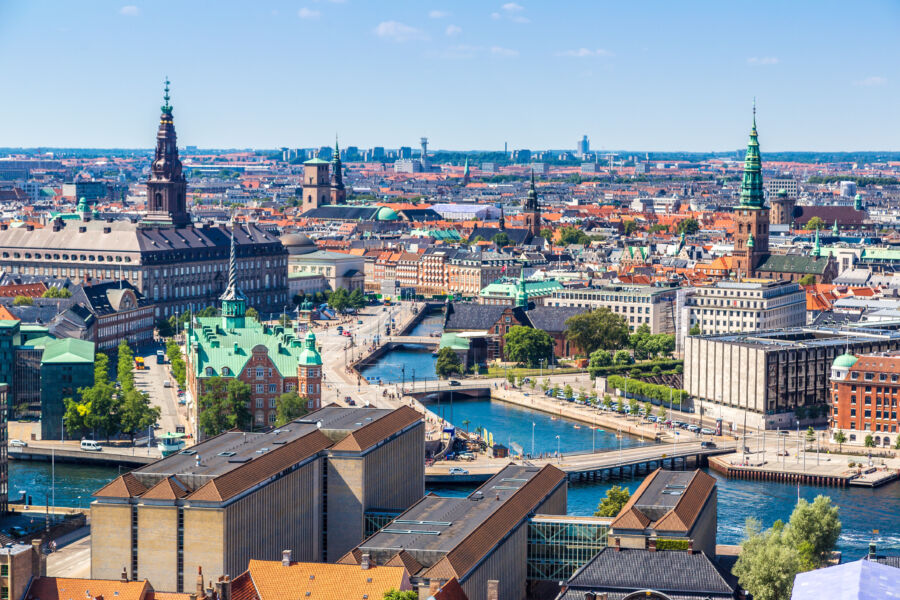
Both cities offer unique places to stay, ranging from budget-friendly hostels to luxury canal-side hotels. Prices tend to be lower in Amsterdam, making it easier to find good deals.
Hotels and Hostels

Amsterdam has many affordable hotels on Booking.com near the city center. Most rooms cost between $100 and $ 150 per night, with budget options starting around $70. The canal ring area has charming boutique hotels in historic buildings.
Copenhagen’s hotels are generally more expensive. Expect to pay $150-200 per night for a mid-range room. The best areas to stay are Indre By (city center) and trendy Vesterbro.
Hostels are a cheaper option in both cities. Amsterdam’s hostels average $30-40 per night for a dorm bed, while Copenhagen hostels charge $35-45 for similar accommodations.
Alternative Stays
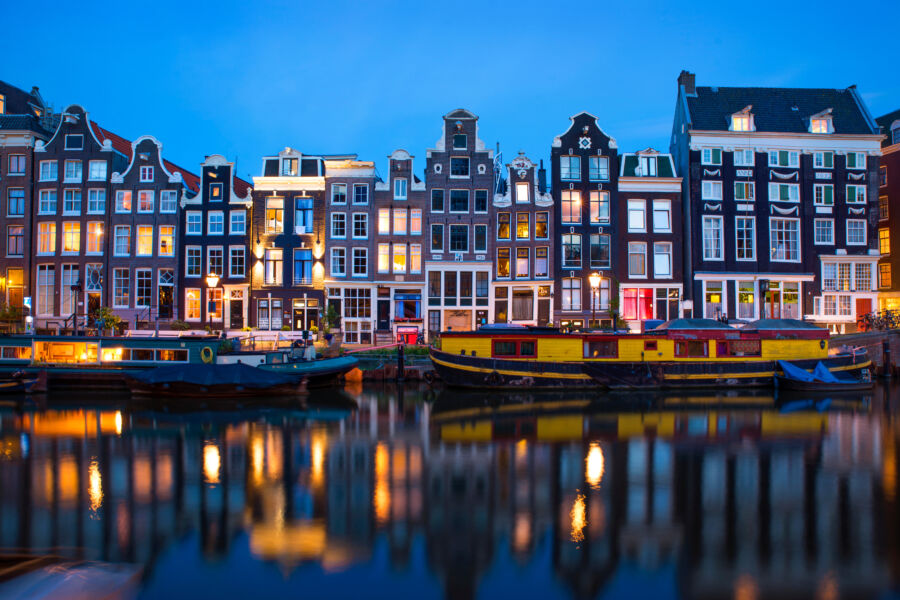
Canal house rentals let visitors experience Amsterdam like locals. These unique properties feature traditional Dutch architecture and water views. Rates start at $200 per night for a one-bedroom apartment.
Copenhagen has a growing number of design-focused apartment rentals. Many showcase Danish minimalist style with modern amenities. Depending on location and size, prices range from $150 to $ 300 nightly.
Houseboats offer a special way to stay in Amsterdam’s canals. These floating homes combine comfort with amazing views. Most sleep 2-4 people, costing $175-250 per night.
Both cities have good camping options just outside the center. From April through October, sites provide affordable stays for budget travelers.
Comparative Insights

Amsterdam and Copenhagen share many features as leading northern European capitals, yet they maintain distinct identities that set them apart in meaningful ways.
Cost of Living
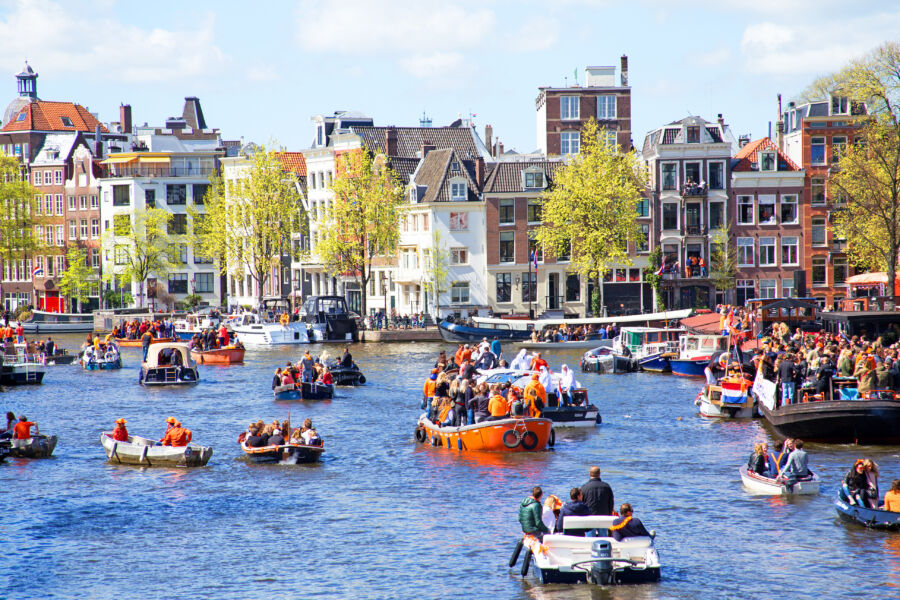
Copenhagen ranks among Europe’s most expensive cities. A meal at a mid-range restaurant costs about €25-35, while monthly rent for a one-bedroom apartment in the city center averages €1,800.
Amsterdam’s prices run slightly lower than Copenhagen’s. Restaurant meals typically cost €20-30, and central apartment rents average around €1,600 monthly.
Both cities have high transportation costs. A monthly public transit pass costs approximately €80 in Copenhagen and €100 in Amsterdam.
Groceries and daily items cost about 10-15% more in Copenhagen compared to Amsterdam. A coffee costs around €5 in Copenhagen versus €3.50 in Amsterdam.
Quality of Life
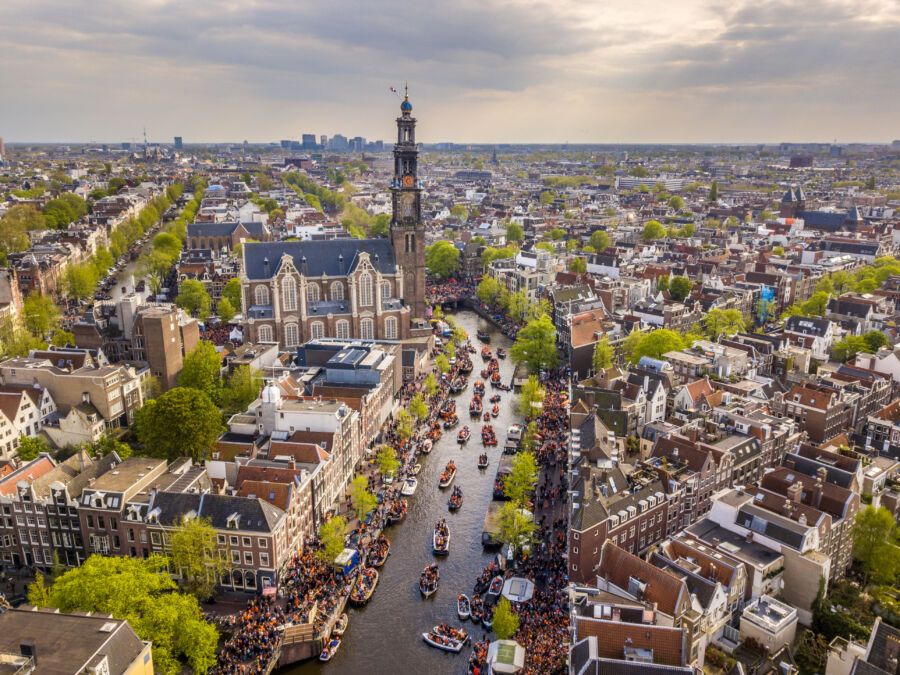
Both cities rank exceptionally high for safety, with low crime rates and well-lit streets. Bike paths and pedestrian areas make getting around easy and pleasant.
Copenhagen leads in sustainability efforts. The city aims to become carbon-neutral by 2025 and features extensive green spaces and eco-friendly buildings.
Amsterdam offers an excellent work-life balance, with flexible working hours and generous vacation policies. The city also offers abundant cultural activities, museums, and entertainment options.
Public services run efficiently in both locations. Healthcare access is universal and high-quality, while public transportation operates reliably and frequently.
Similarities and Differences
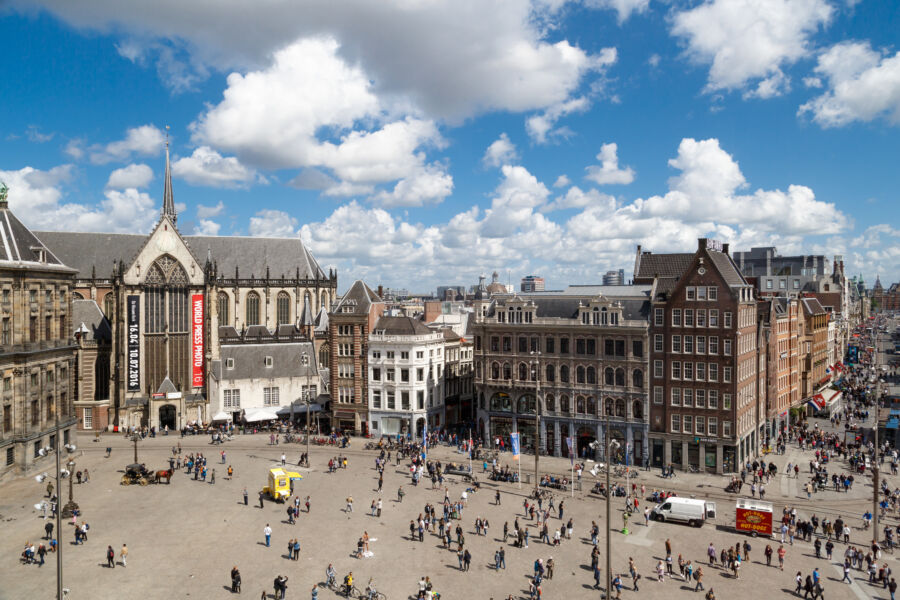
The cities share a love for cycling culture, with extensive bike lanes and bike-friendly infrastructure. Both feature picturesque canals and historic architecture.
Copenhagen emphasizes minimalist design and “hygge” lifestyle. The city feels more spacious and organized compared to Amsterdam’s compact layout.
Amsterdam’s nightlife scene offers more variety, with numerous clubs and entertainment venues. The city draws larger tourist crowds year-round.
Both cities embrace innovation and sustainability. Copenhagen focuses more on environmental initiatives, while Amsterdam leads in creative industries and startups.
See Related: Amsterdam vs Berlin: Key Differences Every Savvy Traveler Should Know
Frequently Asked Questions

Amsterdam and Copenhagen each offer distinct characteristics that shape daily life, from family-friendly environments to transportation systems and weather patterns. These differences create unique experiences for visitors and residents alike.
What are the unique advantages of choosing Amsterdam as a study abroad destination compared to Copenhagen?
Amsterdam’s international student community thrives thanks to numerous English-taught programs at top universities. The city’s central European location makes weekend trips to other countries easy and affordable.
Dutch universities charge lower tuition fees than Danish institutions for non-EU students. Students also benefit from Amsterdam’s bike-friendly infrastructure and student discounts on cultural activities.
How does the cost of living in Copenhagen measure up against Amsterdam for expatriates?
Copenhagen’s living costs tend to run higher than Amsterdam’s, especially for dining out and groceries. A casual meal in Copenhagen costs about 20-30% more than in Amsterdam.
Housing presents a major expense in both cities. A one-bedroom apartment in central Copenhagen averages €1,500 monthly, while similar accommodations in Amsterdam cost around €1,700.
Can you detail the distinct experiences of raising a family in Amsterdam versus Copenhagen?
Copenhagen stands out as an exceptionally family-friendly city with numerous playgrounds and green spaces. The Danish capital puts special emphasis on work-life balance and offers generous parental benefits.
Kids in both cities grow up cycling everywhere. Copenhagen edges ahead with its cleaner air and lower population density, giving children more room to play safely outdoors.
What cultural differences should one expect when moving from Amsterdam to Copenhagen?
Danes practice “hygge,” creating cozy social atmospheres, while Dutch culture embraces direct communication and informality. Danish social circles can take longer to break into compared to Amsterdam’s more immediate openness.
Work culture differs, too. Danish offices often end their day by 4 PM, while Dutch workplaces might extend later but offer more flexible schedules.
What are the key comparisons between the public transportation systems in Amsterdam and Copenhagen?
Both cities excel in cycling infrastructure and public transit options. Copenhagen’s metro runs 24/7, while Amsterdam’s system closes briefly overnight.
Bikes reign supreme in both places, but Amsterdam has more dedicated bike lanes and parking facilities. Copenhagen compensates with wider cycling paths and better separation from car traffic.
How do the climates of Amsterdam and Copenhagen differ, particularly during winter months?
Copenhagen gets 175 rainy days per year, while Amsterdam gets 170. Winters in Copenhagen feel colder, with average temperatures 2-3 degrees lower than in Amsterdam.
Copenhagen also sees more snow during winter. Meanwhile, Amsterdam tends to have milder winters but faces more consistent rainfall throughout the year.
